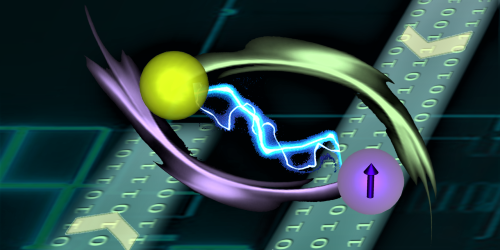A One-Way Road for Microwaves
Microwaves, as with all electromagnetic radiation, travel in all directions indiscriminately, usually going back and forth along a waveguide with equal ease. But finding a way to build a one-way channel for microwave transmission could improve wireless communication and enable quantum information technologies, which require the ability to read fragile quantum states without perturbing them. Now, Can-Ming Hu of the University of Manitoba, Canada, and colleagues have built and tested a device that allows a user to control the direction of microwave transmission on demand.
Their device consists of a small magnetic sphere, just 1 mm in diameter, suspended over a simple microwave cavity. Microwaves in the cavity excite magnons—quantized spin waves—in the sphere. By tweaking the position of the sphere over the circuit, the team found that they could control how the magnons and microwave photons couple to one another, which, in turn, altered the direction in which the microwaves propagate.
This microwave steering mechanism depends on interference between coherent and dissipative magnon-photon coupling. Coherent coupling is analogous to two pendulums connected by a string, which provides a linkage that conserves energy. Dissipative coupling occurs when the string is replaced by a shock absorber, which introduces friction that dissipates energy. In the team’s experiment, the position of the sphere changed which type of coupling dominated. The team says that this novel effect could be used for on-chip microwave isolators that are required to prevent stray signals from interfering in sensitive signal detection and processing applications.
This research is published in Physical Review Letters.
–Christopher Crockett
Christopher Crockett is a freelance writer based in Arlington, Virginia.





